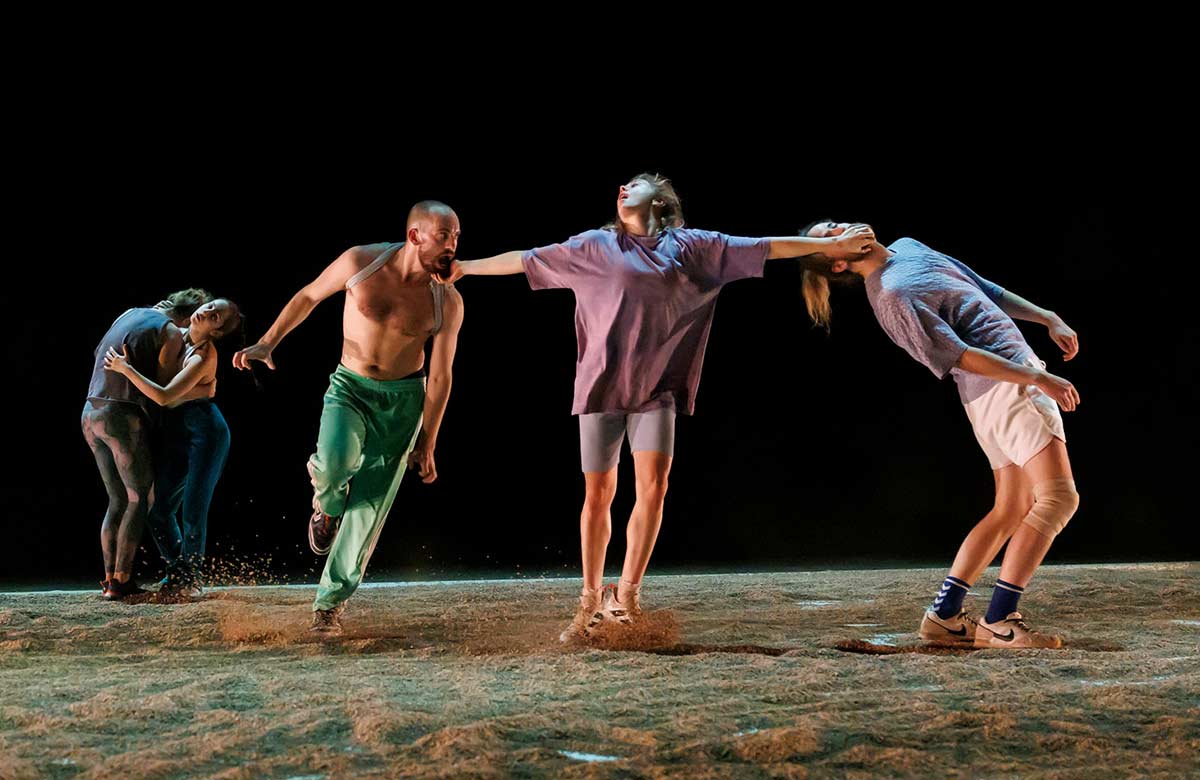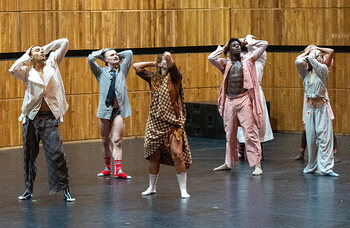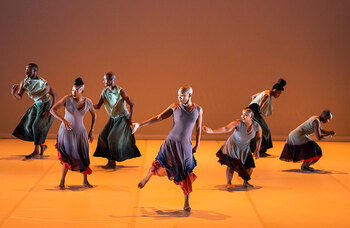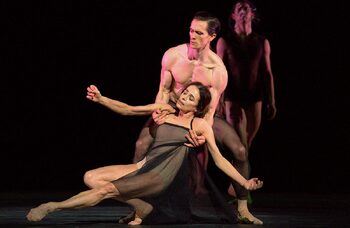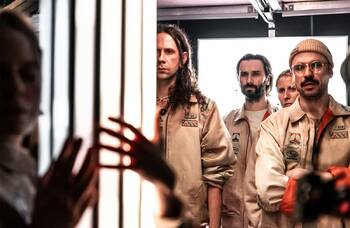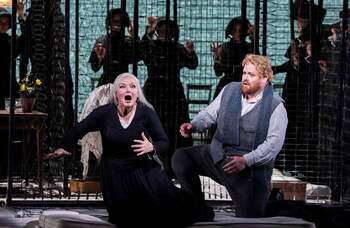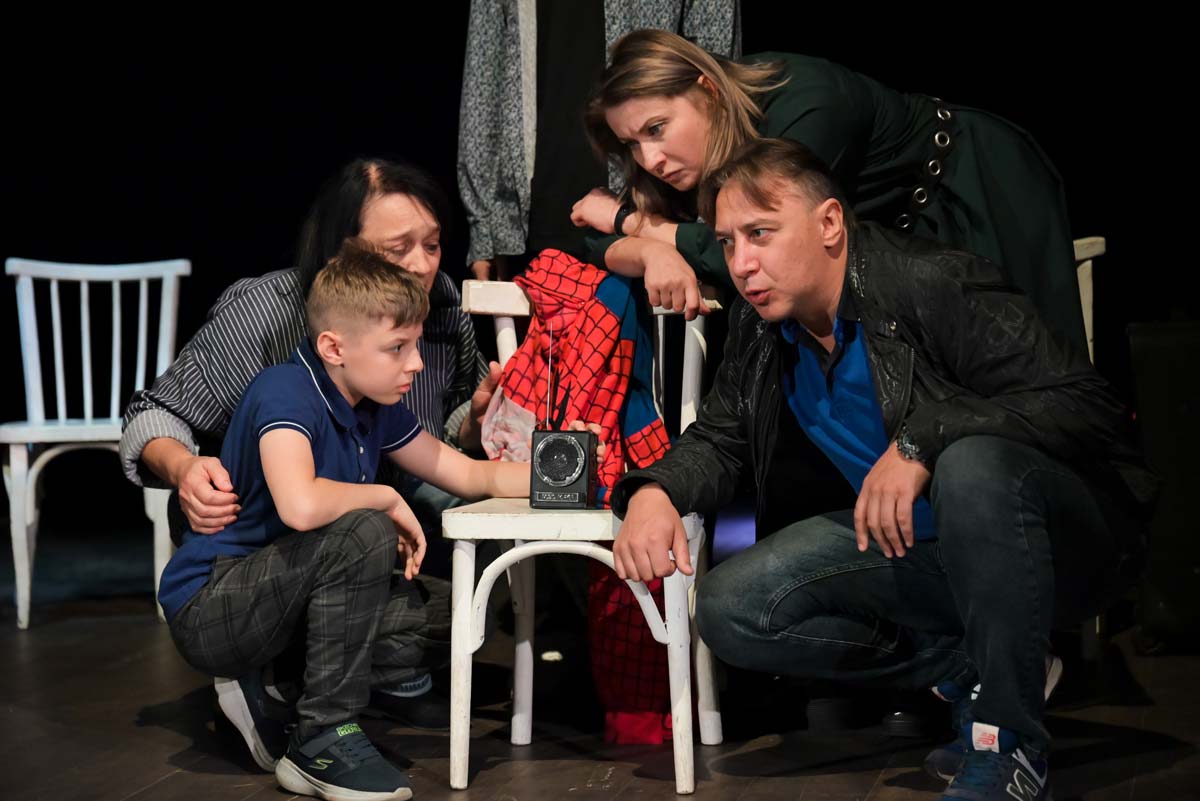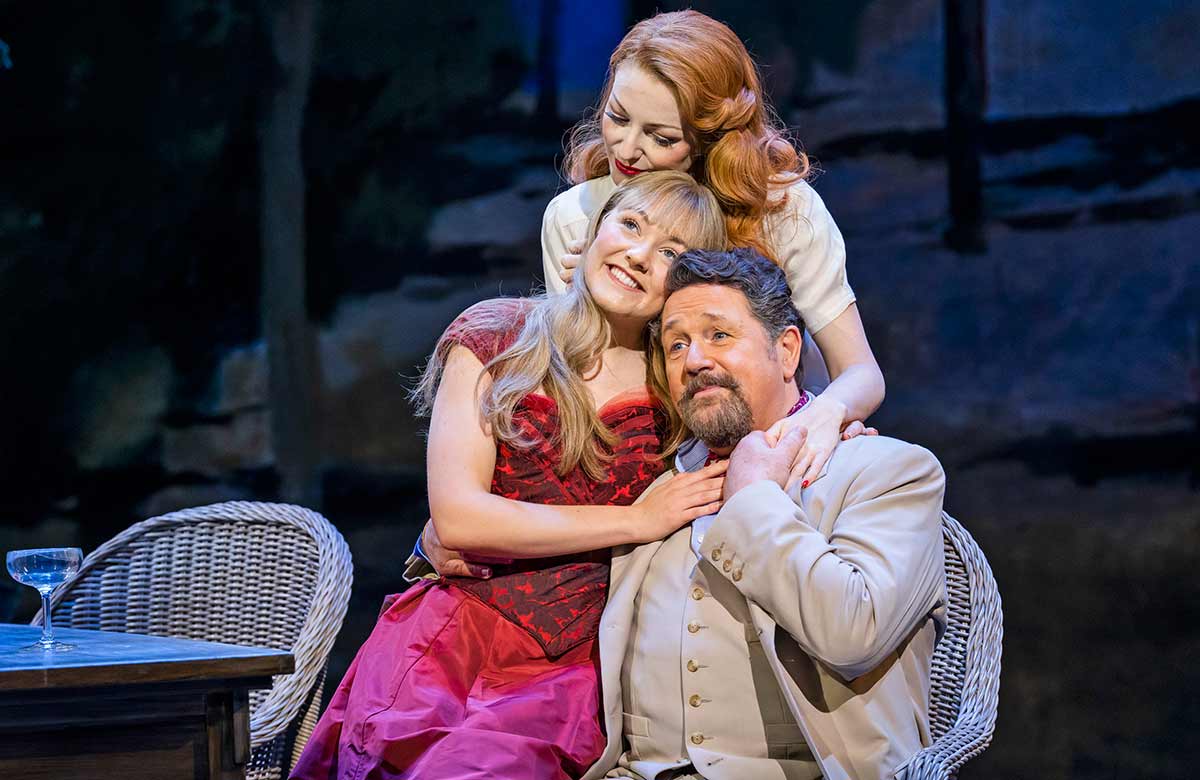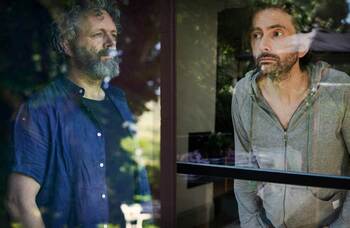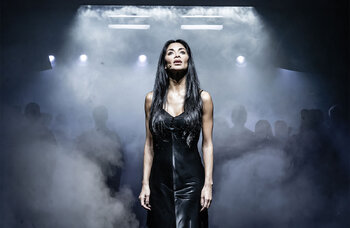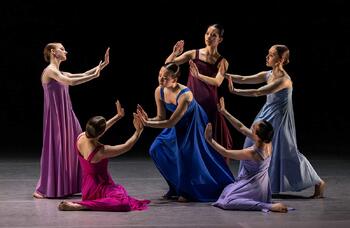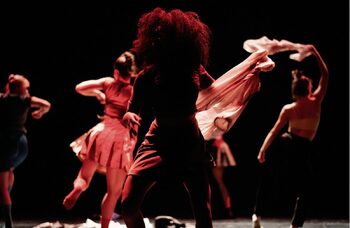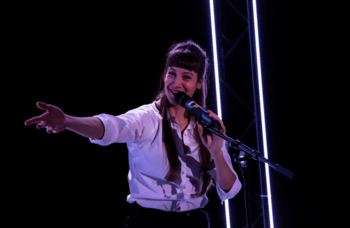Starving Dingoes review
Demanding contemporary dance that takes a deep dive into philosophy and science
A lot of thought has gone into this contemporary dance piece, first seen in 2021. The science of apoptosis, or programmed cellular death, was discussed with the cancer specialists Simone Niclou and Aleksandra Gentry-Maharaj. The UCL professor Thomas Stern was drafted in as a philosophy adviser to mull over ideas of madness, belonging and society. It’s one of those shows where the programme notes do a lot of the heavy lifting. Although it would be hard to classify the result as an enjoyable experience, you have to admire French choreographer Léa Tirabasso’s determination to bring her singular high-concept vision to the stage.
A sand-covered stage suggests an arena for combat. In the gloom, five prone dancers shuffle on their fronts as Johanna Bramli and Ed Chivers’s fizzing, convulsive electronic score kicks in. They move as one entity, singing snatches of a La Traviata chorus, making strange non-verbal sounds. Any one of the five who steps out of formation is quickly grabbed and brought back in line. In due course, however, order breaks down and panicked chaos envelops the group as it tries to identify the problem.
A dysfunctional cell that can’t submit to apoptosis is cancerous – by losing the ability to sacrifice itself, it becomes a threat to the whole. Tirabasso’s interest in the subject comes from a deeply personal place: she was diagnosed with ovarian cancer in 2016. There’s an irony, she notes, in a disease that is, essentially, too full of life. This work widens the topic into notions of societal breakdown. What can, and what should, we do with the dysfunctional elements that threaten a society’s stability?
Continues...
Tirabasso’s full-impact choreography is brutally demanding. There is a feral ferociousness to the dancers’ interactions that can be explicitly violent or sexual. “Animal transformation” and clowning coaches are credited. There’s also a seam of twitching, darting, spasming movement that makes the cast of five seem at times uncannily like live cells observed through a microscope. The aim may be to suggest they act without emotion, programmed to protect – but moments of compassion are allowed to break through.
Looping chains of movement are planned with precision yet have the air of casual anarchy. And as a thudding bass starts to dominate the score, it becomes bewildering to watch – the dancers moan, chant and shriek, eye each other with a zombified, rolling-eyed suspicion, then two or three will join in lockstep or in a tussle. When the rogue element in the group is finally identified (the imposing Karl Fagerlund Brekke), the others cluster around to support a stumbling, flagging comrade, or to contain the threat and try to force conformity.
La Traviata returns (traviata meaning one who has gone astray). More sand is occasionally dumped from the ceiling. There’s a prolonged bout of chest suckling. It’s certainly strange and thought-provoking, but I was quite glad when it was over.
More Reviews
Recommended for you
More Reviews
Recommended for you
Most Read
Across The Stage this weekYour subscription helps ensure our journalism can continue
Invest in The Stage today with a subscription starting at just £5.99
